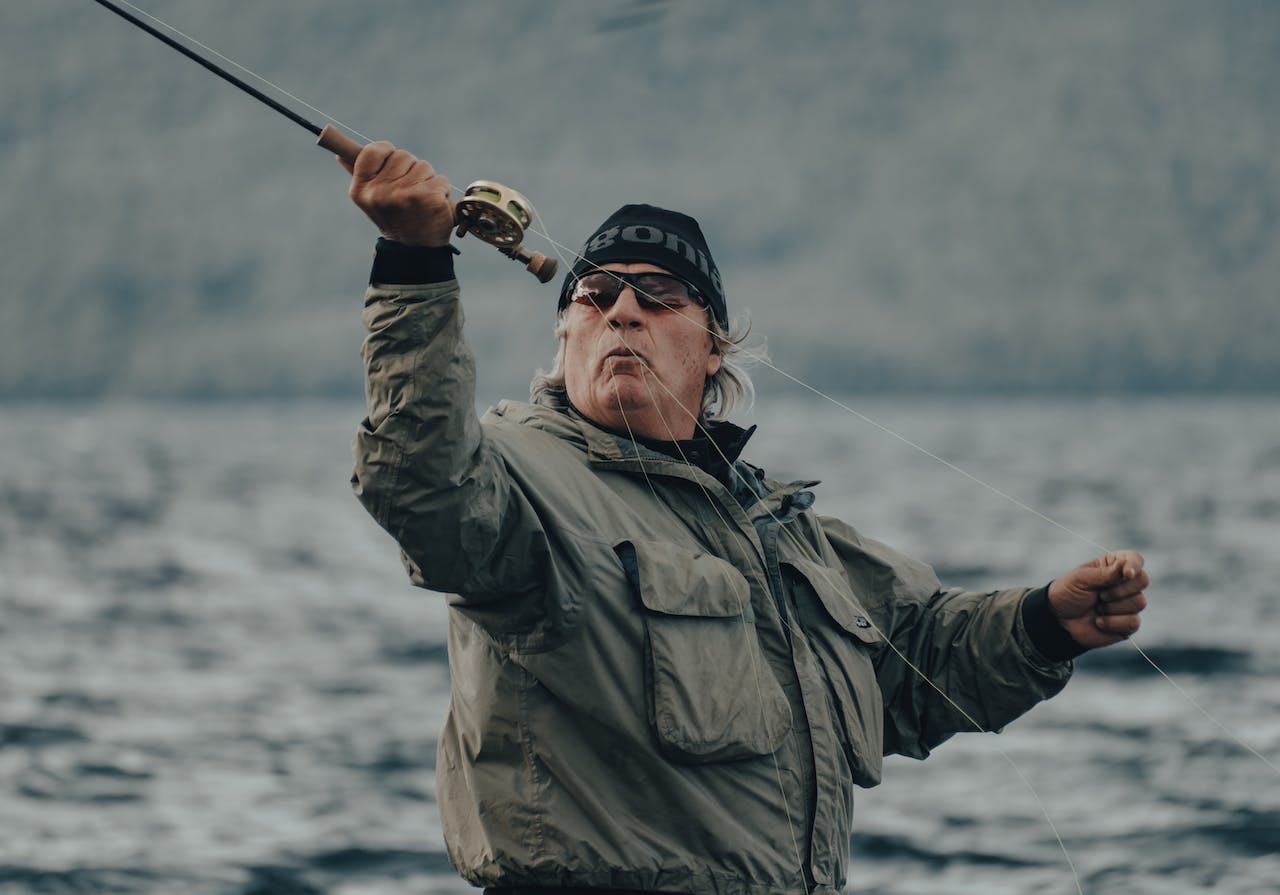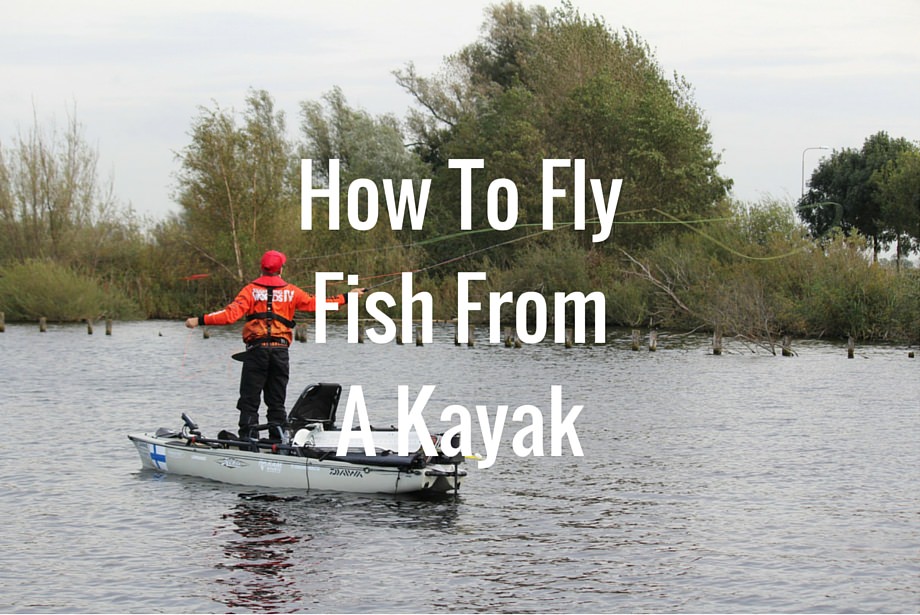Last Updated on January 13, 2024 by Afsar
Embarking on the adventure of fly fishing from a kayak combines the peaceful thrill of angling with the unique challenges and rewards of kayaking. This guide is intended not only to acquaint you with this captivating sport but to immerse you in it. Before casting your line from the deck of a kayak, it is crucial to understand the fundamentals of both fly fishing and kayaking. We will explore everything from selecting the ideal kayak for your fishing escapades to mastering the art of fly fishing. Whether you are an experienced angler or a kayaking enthusiast eager to venture into fly fishing, this article promises to enhance your experience with expert tips and essential insights. So, grab your paddle and your fishing rod – an exciting journey on ‘How To Fly Fish From A Kayak’ awaits you!

What are the popular fishes that can be caught by fly fishing?
Fly fishing offers a diverse range of experiences, targeting various fish species in different environments. Anglers often pursue Trout varieties like Rainbow, Brown, and Brook in cold freshwater streams and lakes, while Salmon, including Atlantic, Chinook, Coho, and Sockeye, are sought in both freshwater and saltwater for their size and fighting abilities. Bass, such as Largemouth and Smallmouth, are popular in North American lakes and rivers for their aggressive behavior. Pike and Muskellunge are large, toothy predators found in freshwater, offering a thrilling catch.
The increasingly popular Carp, known for their cautious nature, are often found in urban waters. In saltwater, fast and elusive Bonefish in tropical flats, large and acrobatic Tarpon in Atlantic coastal waters, and the highly prized Permit in shallow tropical waters challenge fly fishers. The resilient Steelhead, a migratory form of Rainbow Trout, is renowned in the Pacific Northwest and Great Lakes. Finally, the Grayling, notable for its striking dorsal fin, thrives in the cold waters of the northern hemisphere. Each species requires unique strategies, adding to the richness and appeal of fly fishing.
~How To Fly Fishing From A Kayak!
Venturing on a fly fishing excursion from a kayak requires meticulous equipment selection and preparation. Beyond the inherent joys of connecting with nature and the thrill of capturing fish, several critical factors affect the quality and safety of your experience. Among these factors are the type of kayak chosen, its features for stability and comfort, and the specific fly fishing equipment required. Each of these elements plays a pivotal role in facilitating your interaction with the water and the fish. Whether you are a seasoned angler or a novice to the sport, attending to these factors can significantly enhance the caliber of your fly fishing endeavor. This guide delves into the essential aspects of fly fishing from a kayak and offers insights to enable you to make informed choices and enjoy a safe and rewarding fishing adventure.
- Kayak with Adequate Space: Choose a kayak that offers sufficient space for both comfort and practicality. A kayak with moderate space allows for storing gear such as tackle, extra rods, and personal items, without compromising the kayak’s stability and maneuverability. Look for models that balance storage capacity with a streamlined design for easy handling on the water.
- Stand-Up Capability: Opt for a kayak that allows you to stand up, which is crucial for effective fly fishing. Standing provides a better vantage point for spotting fish and enhances casting accuracy. Sit-on-top kayaks are typically more stable and suitable for standing. Consider models with a wide, flat deck and stability features to ensure safety while standing and casting.
- Appropriate Fly Fishing Rod: The right rod is essential for successful fly fishing. Choose a rod that matches the type of fish you’re targeting and your fishing environment. Factors like rod length, weight, action, and material will affect your casting accuracy and the overall fishing experience. It’s worth investing in a high-quality rod that suits your specific needs and skill level.
- Effective Flies and Lures: Your choice of flies or lures should be based on the type of fish you’re targeting and the conditions of the fishing environment. Research the local fish species and water conditions to select the most effective fly patterns. Having a variety of flies and lures in your arsenal will increase your chances of success in different fishing scenarios.
- Personal Flotation Device (PFD): Safety is paramount when kayaking and fly fishing. Always wear a PFD specifically designed for kayaking. Look for a PFD that offers comfort, freedom of movement (especially in the arm and shoulder areas for casting), and enough buoyancy for your body weight. Additionally, consider PFDs with pockets and attachments for easy access to essential gear.
- Stability and Maneuverability: The kayak’s stability is crucial for casting and reeling in fish, especially when standing. A stable kayak minimizes the risk of capsizing. However, it should also be maneuverable enough to navigate to different fishing spots and handle various water conditions.
- Accessibility and Organization: Ensure that your kayak has accessible storage areas for your fishing gear. Organizational features like built-in rod holders, gear tracks for mounting accessories, and compartments for storing tackle and personal items will keep your essentials within reach and securely stored.
- Comfort for Long Sessions: Comfort is key for long fishing trips. Look for kayaks with comfortable seating, adjustable footrests, and ergonomic design to reduce fatigue and increase your time on the water.
By considering these factors, you can select a kayak and gear that enhance your fly fishing experience, ensuring both safety and enjoyment.
How to Choose a proper kayak for Fly fishing:
Choosing the right kayak for fly fishing is a pivotal decision that can greatly impact your experience on the water. If you already own a kayak, you might not need to invest in a new one. Instead, consider adapting it for fly fishing, especially if it’s not a sit-in model, which can be challenging for this sport. The ideal choice for fly fishing is a sit-on-top kayak. These kayaks typically feature an open cockpit design, offering ease of movement which is crucial for the sweeping motions required in casting.
The key is to find a kayak that strikes a perfect balance between space and size. While a spacious deck is desirable for freedom of movement, an overly large kayak isn’t necessary. Many anglers successfully use kayaks around 9 feet in length. The goal is to find a kayak that offers an optimal mix of tracking and maneuverability, rather than just focusing on size.
Maneuverability is crucial when fishing from a kayak, as it determines how easily you can turn and position yourself, responding swiftly to your paddle strokes. Efficient maneuvering is especially important in fly fishing, where positioning can make all the difference.
Tracking, on the other hand, refers to how straight your kayak travels in the water. A kayak with good tracking maintains its course even when you stop paddling, but be mindful that excellent tracking can sometimes compromise maneuverability. Therefore, choosing a fly fishing kayak requires finding one that offers a great blend of both qualities.
Choose a fly fishing kayak which provides a good blend of tracking and maneuverability.
Nurul Afsar
Sit-in-kayak vs. Sit on top kayak :
My vote goes to the sit-on-top kayak, which offers great movement while standing. Most of the time, these types of kayaks come with special arrangements for kayak fishing, like rod holders and mounts to mount gear.
Accessories That Are Needed
Tackle storage or get a dry bag:
You should keep your flies in a waterproof place so that the hooks don’t get rusty. It’s important, though, that it can get rusty if you don’t care about it properly. You can use tackle boxes or dry bags to prevent this. We already have an article on Best Dry Bags.

Techniques For Fly Fishing from
Managing Wind
Wind plays a pivotal role in fly fishing, significantly influencing your casting ability. When faced with strong winds, it’s often wise to take a brief pause to let conditions settle before attempting to cast again. Interestingly, wind can sometimes be an ally, especially if it follows a predictable pattern and aligns with the direction you intend to cast your flies. Ultimately, your success in these conditions hinges on your casting accuracy and skill. Adapting to the wind’s behavior and using it to your advantage requires practice and precision, but with experience, you can turn this natural element into a beneficial component of your fly fishing strategy.
Casting
One of the most important parts of fly fishing from a kayak is the casting process. The better you can cast, the better you can catch fish. It’s not an easy task for a newbie to stand and cast from a sit-on-top kayak. However, doing it several times will allow you to stand properly. It’s better to cast while standing rather than sitting. Standing will give the possibility to cast for longer distances.
However, if you want to cast from a sitting position, you need to make a habit of it by trying more and more, it’s quite tough because the line is quite close to the water. Shorter casts can be effective if used properly by sneaking into the area with your kayak.
Stripping & collecting
Stripping, an essential technique in fly fishing, varies widely among anglers and can be considered an art form. This technique, which involves manipulating the fly line to imitate natural prey movement, differs in style from one person to another. For instance, as a right-handed individual, I typically hold the rod in my right hand and use my left hand to strip the line. In situations requiring quicker stripping, I might tuck the rod under my arm, freeing both hands for more rapid movement.
To streamline the process, I often employ a stripping basket. This handy tool simplifies line management, making it easier to control and retrieve the line smoothly. While I generally use my index finger to pull the line during stripping, the choice of which finger to use is entirely personal. The key is finding a method that feels comfortable and effective for you. Ultimately, the goal of stripping is to mimic the natural behavior of the fly’s prey, and mastery of this skill can significantly enhance your fly fishing success.
Check this Fly Fishing Stripping Basket: Fly Fishing Stripping Basket –Smooth Danish Design
Frequently Asked Questions
Fly fishing is a unique angling technique that involves catching fish using a specialized rod and an artificial fly or lure. This method is loved by many people due to its distinctiveness. The fly or lure used in this method usually has very little weight.
Fly fishing from a kayak allows you to access remote or shallow waters that might be difficult to reach from shore or a larger boat. It’s also a peaceful, environmentally friendly way to fish, offering a more intimate connection with nature.
While standard kayaks can be used, fishing kayaks often have features like rod holders, gear storage, and increased stability. Look for kayaks labeled as ‘fishing kayaks’ or those with a flat, stable design.
Balancing in a kayak while fly fishing can be challenging for beginners. It’s important to start in calm, shallow waters and practice balancing while casting. Fishing kayaks are typically more stable to assist with this.
Essential gear includes a fly fishing rod and reel, flies, a paddle, a personal flotation device (PFD), and a kayak suited for fishing. Optional gear might include a kayak anchor, water-resistant clothing, and polarized sunglasses for better visibility.
Organization is key. Use storage compartments in your kayak, and consider gear like tackle boxes or bags designed to fit in kayak spaces. Keeping gear secure and within reach is important for efficiency and safety.
You can fly fish from a kayak in various waters, including lakes, rivers, and coastal areas. However, the type of water may dictate the kayak’s design and your fishing technique.
Practice makes perfect. Start with shorter, more controlled casts to get a feel for the balance and motion. It’s also helpful to minimize body movement and use more wrist and arm action.
Yes, with the right precautions. Always wear a PFD, check weather conditions before heading out, inform someone about your trip, and have a means of communication in case of emergencies.
Absolutely! Beginners should start with basic kayaking and fly fishing skills separately before combining them. Taking lessons or joining a guided tour can also be very helpful.
Use your paddle to quietly navigate to your desired spot. Consider the wind and current when positioning your kayak. An anchor or a stakeout pole can help maintain your position.

Afsar is an avid kayak blogger born near the coast. He has a passion for kayaking and started as a child. He has paddled in various conditions and locations and promotes responsible kayaking. Afsar’s blog is widely read, and they are a respected voice in the kayaking community, offering valuable content on kayaking trips, gear, tips, and tricks. Afsar collaborates with other bloggers and brands and continues to inspire others through their writing and social media.


Very interesting, I would like to learn more about fly fishing in a kayak.
Merci
Very interesting, I would like to learn more about fly fishing in a kayak.
I have already a kayak and I found your article about fly fishing in a kayak exiting.
I would like to read more of your good advices an kayaking fly fishing.
Thank you.
Your article is very helpfull for a novice
You are most welcome. I am glad the article helped you to understand the joy of fly fishing from a kayak 🙂
Wow. I would never have imagined doing fly fishing in a kayak.
That is one different way to do fly fishing. Never thought of doing it from a kayak. Kudos for the idea.